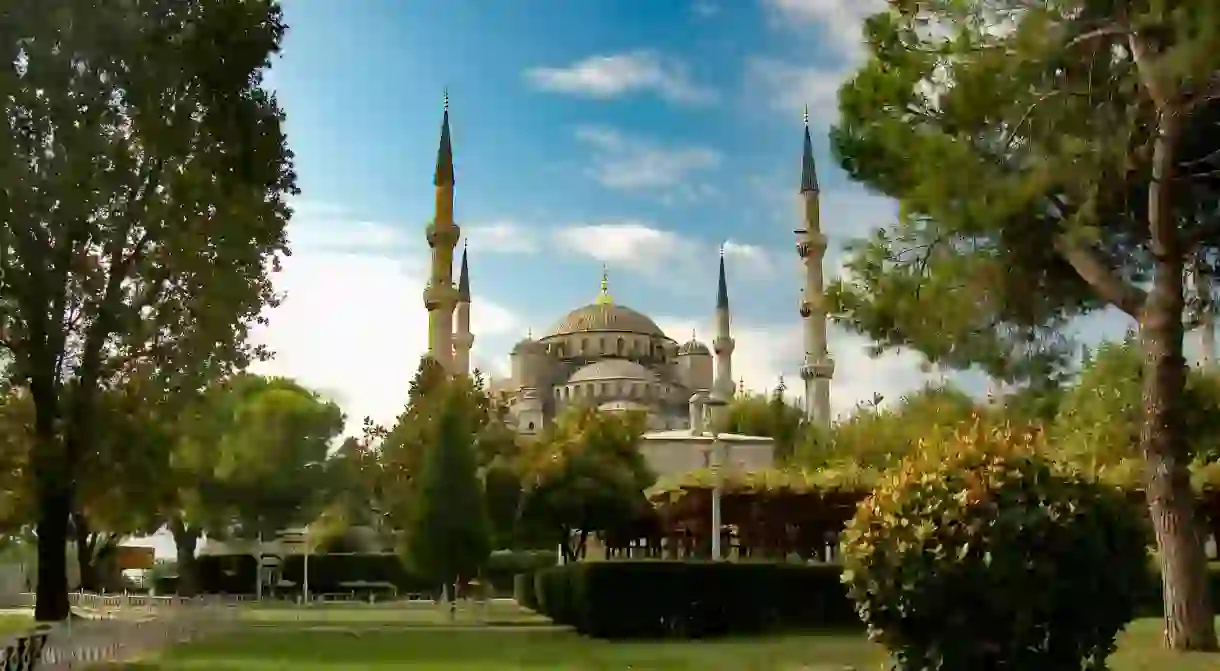The 9 Most Beautiful Mosques in Istanbul

Straddling both Europe and Asia, it’s no surprise that Istanbul’s rich cultural heritage has had a huge influence on some of its most important architecture. With the minarets of around 3,000 mosques piercing Istanbul’s skyline, these places of worship are an integral part of the city. Here are the most beautiful mosques worth visiting on your trip.
Sultanahmet Camii: ‘Blue Mosque’
Mosque

Süleymaniye Mosque
Mosque

Rüstem Paşa Mosque
Mosque

Also built by famous architect Sinan, this small but splendid mosque gives the Blue Mosque a run for its money when it comes to decorative ceramics. A real gem, Rüstem Paşa is covered in exquisite Iznik tiles, with no other mosque in the city using them quite so lavishly. The building was designed for Suleiman’s Grand Vizier and is set on top of a complex of vaulted shops, which were incorporated to support the complex financially, as well as physically. While it’s a little tricky to find (you’ll need to look up as it’s not on street level), it’s only a five-minute walk from the Spice Bazaar. You’ll find access steps on Hasırcılar Caddesi, or on a small street that runs north off Hasırcılar Caddesi towards the Golden Horn.
Yeni Camii: ‘New Mosque’
Architectural Landmark, Mosque

Although its name suggests otherwise, this building in the Eminönü quarter of the city actually dates back to 1663. Found at the end of Istanbul’s famous Galata Bridge, the New Mosque took more than half a century to build, due to funding issues and political turmoil, and was designed by Sinan’s apprentice, Davut Ağa. It was the last of the imperial mosques to be built, taking influences from both the Blue Mosque and Süleymaniye Mosque. The ‘New Mosque’ boasts an opulent interior decorated with gold leaf, carved marble and Iznik tiles. Its silhouette has become an iconic part of Istanbul’s skyline.
Ortaköy Mosque
Bridge, Mosque

Mihrimah Sultan Mosque
Mosque

Sancaklar Mosque
Mosque
Şakirin Mosque
Mosque

Beykoz Karlıtepe Merkez Camii
Mosque, Architectural Landmark
With one of the most intriguing minarets in Istanbul, the Beykoz Karlıtepe Merkez Mosque was completed in June 2016 and exudes a more contemporary approach to mosque design. The minaret has a public balcony that has a beautiful view of the Bosphorus that stretches all the way to the Asian side on a clear day. The mosque’s library is also open to visitors who can pick up something to read before or after they have taken in the bird’s-eye view of the city. Recommended by Feride Yalav-Heckeroth.
Additional reporting by Charlotte Luxford.













